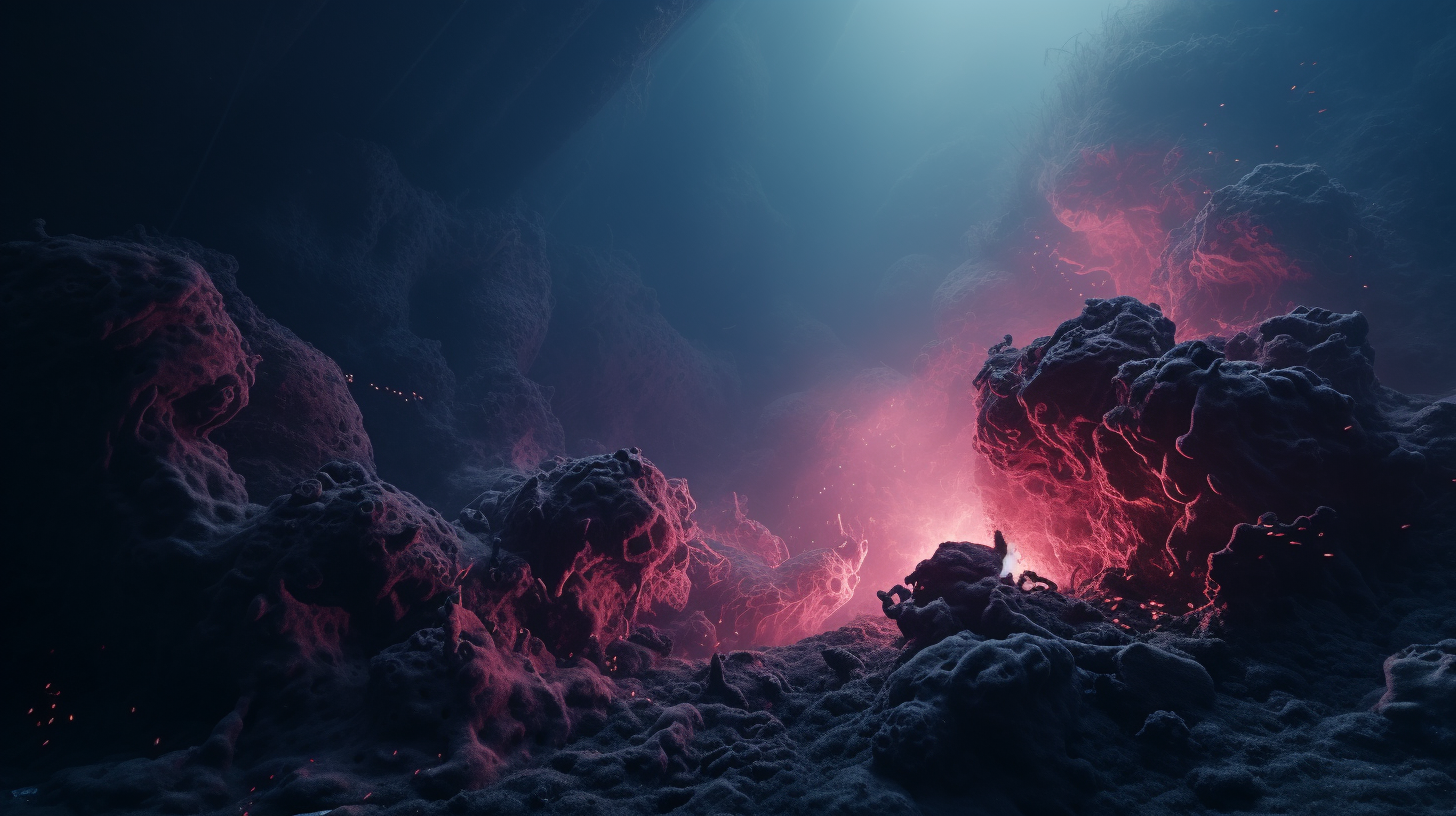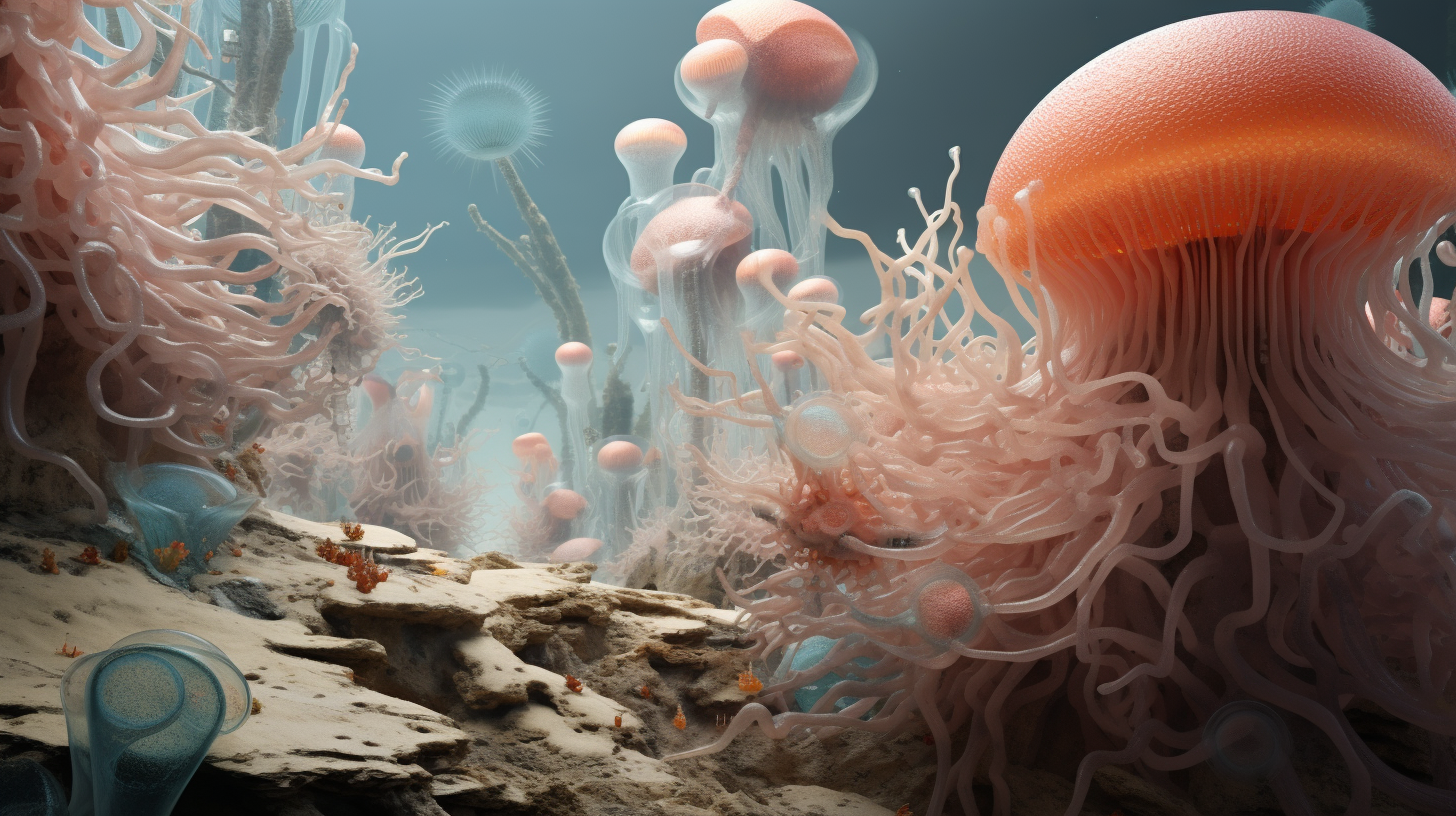The Hunt for Subsurface Alien Life
When we think of extraterrestrial life, our minds often wander to the vastness of outer space where grey aliens and little green men roam around in UFOs.
But what if the secrets to alien existence lie much closer, buried deep beneath the surfaces of planets and moons? In our quest to uncover the unknown, one theory of alien life turns our gaze underground, where the potential for life beyond Earth could be hiding.
The subsurface realms of celestial bodies present a thrilling frontier in astrobiology, where there are possibilities of life that doesn’t rely on sunlight, but instead may thrive in subterranean habitats. Join us as we examine the compelling evidence and the innovative technologies paving the way for this groundbreaking research.
Here we investigate the environments where subsurface life could exist and the impact such a discovery would have on our understanding of life in the cosmos.
The Possibility of Subsurface Alien Life
The Search for Life on Other Planets
We’ve long been captivated by the prospect of discovering life beyond Earth. Our pursuits have led us to scour the cosmos, probing planets and their moons for signs that we’re not alone. The focus has historically been on surface conditions – seeking out Earth-like environments where liquid water and a stable atmosphere might hint at the presence of life as we know it.
But, it’s becoming clear that the search should dive deeper, quite literally:
- Probing beneath the icy crusts of Jovian moons like Europa and Ganymede
- Investigating the rocky subsurfaces of planets like Mars, where ancient water flow might’ve supported life
- Exploring the potential for liquid water oceans under the surface of Saturn’s moon Enceladus
These examples offer possibilities untouched by the harsh radiation and extreme temperatures often found on the surfaces of these celestial bodies, that would render life as we know it, a impossibility.
The Importance of Subsurface Environments
So, why cast our gaze beneath the ground? Subsurface environments may be sheltered from cosmic radiation and the vacuum of space, providing a stable haven for life to thrive. We know that on Earth, life can exist in the most extreme and isolated environments:
- Microbial communities deep within Earth’s crust
- Life forms nestled in the hydrothermal vents at the bottom of our oceans
- Organisms that survive in the subsurface ice of Antarctica
These examples on our own planet hint at the resilience of life and its ability to adapt to conditions well beyond the traditional biosphere.
The potential for subsurface alien life forms not only reshapes our strategies in astrobiology but also emphasizes the need to refine our technologies and methodologies for probing these hidden realms.
We’re pioneering new ways to detect life, developing instruments capable of drilling into alien crusts and sampling subsurface oceans. Humanities next steps involve sending these technologies on missions that will give us an unprecedented glimpse into the cosmic subterranean worlds, broadening our horizon in the quest to uncover alien life.
Signs of Subsurface Alien Life
Deep-Sea Hydrothermal Vents as Potential Habitats
Understanding life in deep-sea hydrothermal vents on Earth gives us clues about possible extraterrestrial habitats. These environments are rich with chemosynthetic organisms that do not require sunlight, suggesting that life could thrive in similar conditions elsewhere in the solar system. Key attributes include:
- Chemosynthesis: Microbes convert chemicals from vent emissions into energy.
- Extreme Conditions: Life has adapted to high pressures and temperatures.
- Independence from Surface: Organisms in these ecosystems rely on geothermal energy, not sunlight.

Mars: Is There Life Below the Surface?
Mars presents intriguing possibilities for subsurface life, as its surface is hostile to known life forms due to radiation and lack of liquid water. But below the Martian crust, conditions may be more conducive to life:
- Past Water Flow: Evidences such as dried-up riverbeds and mineral deposits hint at historical water sources.
- Methane Bursts: Temporary spikes in methane levels could be biological in origin.
- Ice Caps: These could harbor microbial life, analogous to Earth’s polar extremophiles.
Europa: A World with Hidden Oceans
Jupiter’s moon Europa is a prime candidate in the search for alien life due to its vast subsurface ocean. This ocean, possibly twice as voluminous as Earth’s, could support life:
- Saline Water: Similar to Earth’s oceans, which host diverse life forms.
- Geothermal Activity: Could provide the necessary energy for organisms through hydrothermal vents.
- Protective Ice Shell: Insulates the ocean from Jupiter’s radiation, creating a stable environment.
K2-18b: A thriving Sub-Neptune?
In September 2023, the JWST made a ground breaking discovery. It detected molecules that we know as humans are only produced by micro-organisms. Read more about that exciting sign of alien life here.
Tools and Techniques for Detecting Subsurface Life
Planetary Rovers: Exploring the Unseen
When considering the exploration of subsurface environments beyond Earth, we turn to sophisticated planetary rovers engineered for such complex tasks. These machines are equipped with a vast array of sensors and tools specifically designed to navigate and analyze extraterrestrial terrain:
- Ground-penetrating radar to map subsurface structures and locate potential habitats
- Robotic arms for maneuvering and interacting with the environment
- Cameras specialized for various light wavelengths to photograph the terrain in detail
Our ongoing advancements in autonomous navigation and AI allow these rovers to traverse challenging landscapes and make informed decisions about where to collect valuable scientific data.
Drilling and Sample Collection: Unlocking Secrets from Below
To obtain a clear understanding of the subsurface ecosystems, we rely on drilling technologies that can penetrate alien soils and ice. These instruments help us reach depths where life may flourish away from the harsh conditions of the surface:
- Percussive drills that can bore into rock and ice, retrieving core samples for analysis
- Cryobots and hydrobots designed to melt through icy layers and access subsurface oceans
- Sample-handling systems ensuring uncontaminated collection and storage of samples for later examination
We’re constantly refining these tools to ensure they can withstand the extraterrestrial environment while minimizing the risk of contaminating the very habitats we seek to study.

Microscopy and Analytical Instruments: Revealing Microbial Life
At the heart of our search for subsurface life are the microscopy and analytic tools that help us detect and characterize potential biological signatures. We deploy a variety of sophisticated instruments that make it possible to scrutinize extraterrestrial samples at a microscopic level:
- Electron microscopes capable of revealing the fine structure of microbial cells
- Raman spectrometers providing molecular composition information based on light scattering
- Mass spectrometers used to identify organic compounds within samples
These instruments are vital in our quest to detect the faintest whispers of alien life, by providing detailed insights into the composition and structure of collected samples. With each mission, we gather more data, drawing us ever closer to understanding the potential for life in the cosmos.
Challenges in Studying Subsurface Alien Life
Extreme Environments: Surviving Harsh Conditions
We face daunting challenges when attempting to study life beneath the surface of other planets. The extreme environments of celestial bodies are characterized by:
- Intense radiation levels that can damage sensitive equipment and would damage DNA if humans were to land there.
- Subzero temperatures requiring robust thermal control systems for sensitive instruments.
- High-pressure conditions that can crush traditional machinery without specialized designs.
- Chemical compositions that can be corrosive or toxic to both machinery and potential life forms.
Developing technology capable of withstanding these harsh conditions while maintaining scientific integrity is one of our primary concerns.
Accessing and Sampling Subsurface Environments
The act of reaching and extracting samples from subsurface environments presents its own set of technical hurdles:
- The complexity of getting there in the first place.
- The complexity of then drilling or melting through alien soil and ice layers, some of which may be kilometers thick.
- The limitations in power supply and battery life for remote-operated devices, hindering extended missions.
- The logistical challenges of maneuvering and deploying heavy drilling equipment on distant celestial bodies.
- The need for precision and control to avoid sample contamination during the collection process.
Even though these difficulties, our advancements in robotic technology and remote operations provide hope for successful subsurface exploration.
Differentiating Indigenous Life from Contamination
Ensuring the integrity of our findings requires meticulous procedures to differentiate between indigenous life and contamination from Earth-based organisms:
- Establishing rigorous sterilization protocols for all equipment Before deployment.
- Designing sample collection and containment systems to minimize exposure to external contaminants.
- Developing advanced analytical techniques to distinguish alien bio-signatures from introduced Earth microbes.
- Implementing in situ analysis to reduce the risk of sample alteration during transport.
Through careful planning and state-of-the-art technology, we aim to overcome these challenges, paving the way for groundbreaking discoveries in the search for subsurface alien life.
The Implications of Discovering Subsurface Alien Life
The Origins of Life: Is Earth Unique?
In our quest to understand subsurface alien life, one burning question persists: Is Earth unique in its ability to host life?
Discovering life beneath the surfaces of other celestial bodies would offer profound insights into this question. Should we find extraterrestrial microorganisms or more complex life forms, it would suggest life isn’t an Earth-only phenomenon—possibly indicating a cosmic propensity for life.
- Biological Diversity: Varying environmental conditions could lead to life forms radically different from those on Earth.
- Panspermia Hypothesis: If life on other planets shares genetic similarities with Earth life, it could support the theory that life can spread from one planet to another.
- Archean Earth Analogs: Organisms in extreme subsurface environments might mimic ancient Earth life, shedding light on our own origins.
Astrobiology and the Search for Habitability Beyond Earth
Astrobiology aims to explore the potential for life in the universe. The discovery of subsurface alien life would significantly bolster this field, providing concrete examples of life as it may exist elsewhere.
- Habitability Criteria: Key factors for habitability—such as liquid water, a stable climate, and an energy source—may be redefined based on new findings.
- Instrumentation and Techniques: Advanced tools would be developed for deeper planetary exploration and more precise detection of biological signatures.
- Interdisciplinary Collaboration: The hunt for alien life depends on expertise from myriad scientific disciplines including geology, chemistry, and computer science.
Ethical Considerations: How to Approach Alien Life
Uncovering alien life forms poses not just scientific challenges but ethical ones too. We must consider how we interact with potential extraterrestrial ecosystems.
- Non-Contamination: Ensuring we don’t introduce Earth-based microbes into new environments, which could be detrimental to both the indigenous life and our study of it.
- Planetary Protection Policies: Revising international guidelines to safeguard alien locales from earthly interference.
- Moral Responsibility: Debating our obligations to extraterrestrial life forms, including whether we have the right to disrupt their habitats or use them for our own purposes.
Conclusion
We stand on the brink of a new era in our understanding of life’s diversity and distribution. The search for subsurface alien life challenges us to rethink our place in the cosmos and compels us to develop technologies that push the boundaries of exploration. As we investigate deeper into the unknown, we must proceed with a sense of responsibility, ensuring that our curiosity does not harm the very mysteries we seek to unravel. Our journey is just beginning, and the discoveries that await could transform our knowledge of life itself.






